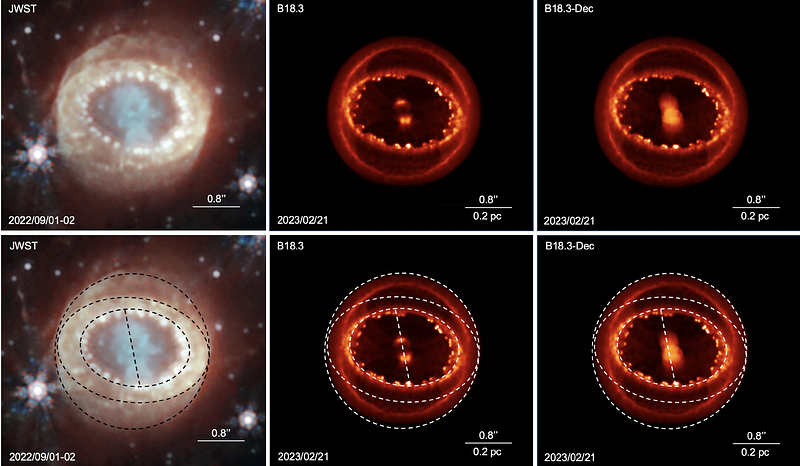Tracing the ejecta structure of SN 1987A: Insights and diagnostics from 3D MHD simulations

Tracing the ejecta structure of SN 1987A: Insights and diagnostics from 3D MHD simulations
S. Orlando, M. Miceli, M. Ono, S. Nagataki, M. -A. Aloy, F. Bocchino, M. Gabler, B. Giudici, R. Giuffrida, E. Greco, G. La Malfa, S. -H. Lee, M. Obergaulinger, O. Petruk, V. Sapienza, S. Ustamujic, J. Weng
AbstractSupernova (SN) 1987A provides a unique window into the aftermath of a massive stellar explosion, offering key insights into the ejecta's morphology, composition, explosion mechanism, progenitor system, and circumstellar medium (CSM) interaction. We investigate large-scale ejecta asymmetries in SN 1987A. By comparing the simulations with JWST observations and making predictions for XRISM, we aim to refine our understanding of the explosion mechanism and the remnant's evolution. We performed 3D MHD simulations that trace the evolution of SN 1987A from the SN to the SNR, extending our predictions up to 5000 years into the future and considering the Ni-bubble effects. The simulation results are compared with JWST observations and used to predict XRISM spectra, to evaluate the accuracy of the modeled ejecta structure. Our simulations reproduce the large-scale Fe-rich ejecta morphology seen by JWST, revealing two clumps suggestive of a bipolar explosion. Ni-bubble effects in the first year boost Fe-rich ejecta expansion and their interaction with the reverse shock. However, discrepancies with JWST observations in clump velocities and spatial distribution suggest stronger explosion asymmetries than modeled. Since 2021, our models predict that shocked ejecta have contributed increasingly to X-ray emission, now rivaling shocked CSM and soon dominating as the latter fades. Future XRISM observations will trace the evolution of these ejecta structures, refining constraints on explosion geometry. Early remnant asymmetries from CSM interaction may persist for at least 100 years. Our results underscore the role of asymmetric core-collapse mechanisms in shaping SN 1987A's ejecta and constraining its explosion geometry. Future studies should explore more extreme asymmetries, in neutrino-driven core collapse or magneto-rotational SN models, to identify the origin of its bipolar Fe-rich structure.